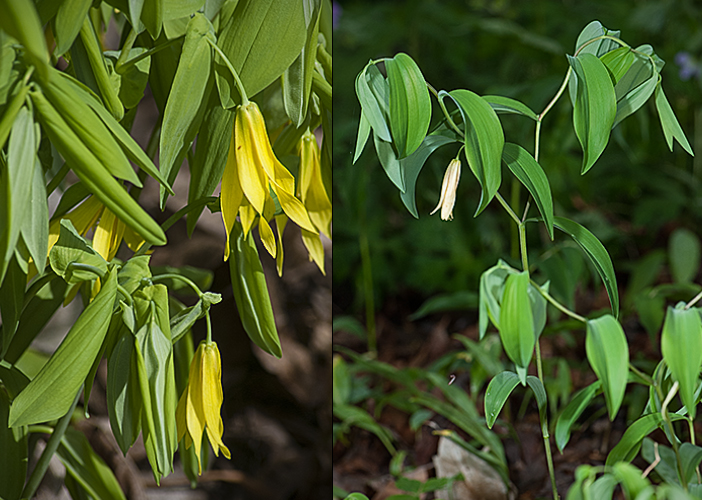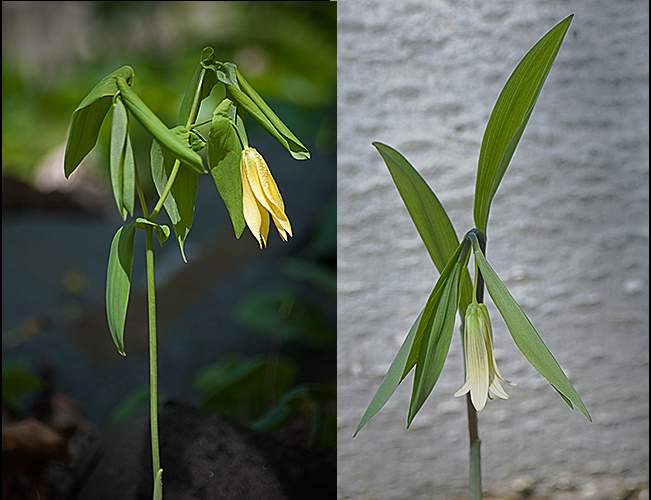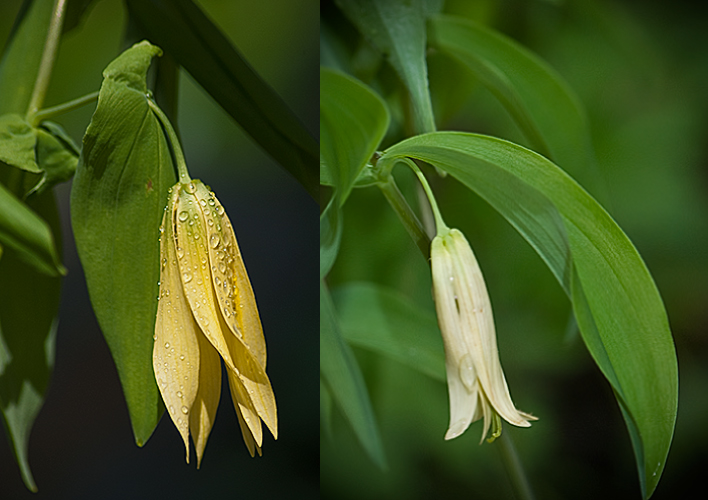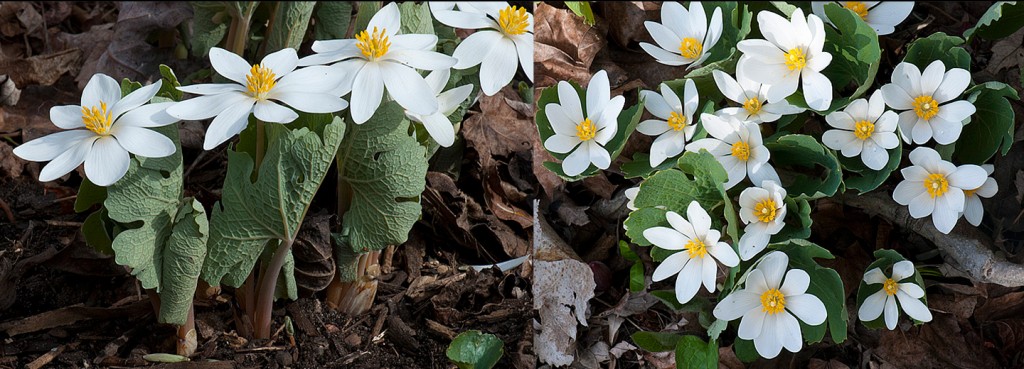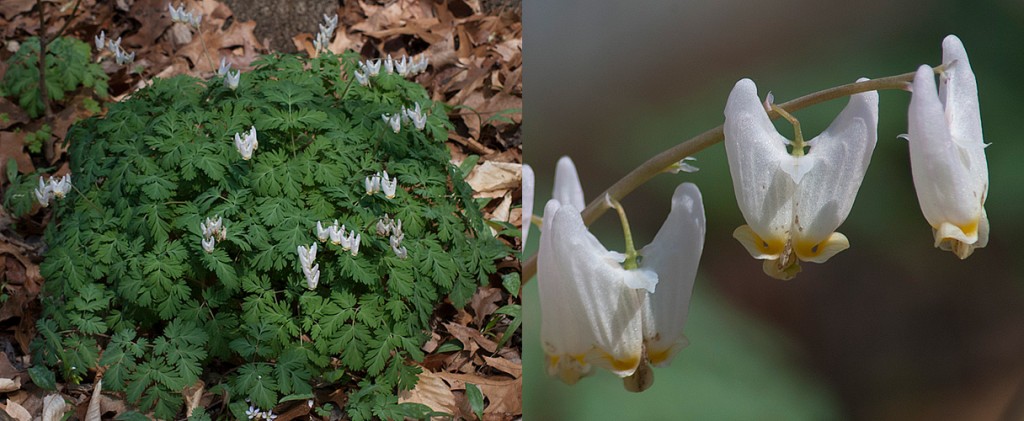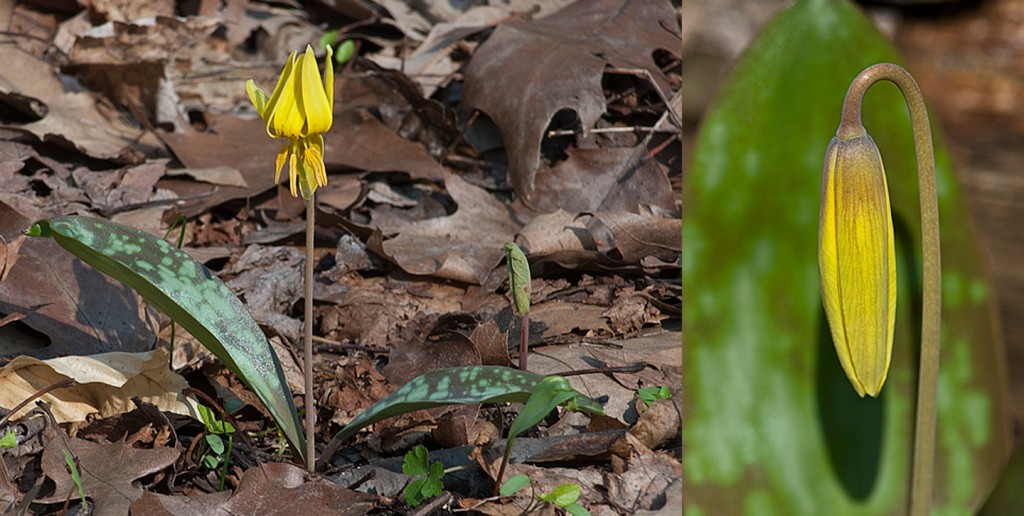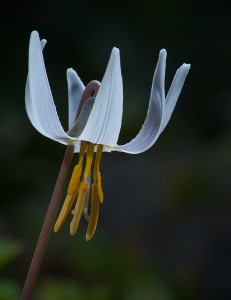Two species of bellworts occur in Michigan. They are Large-flowered Bellwort (Uvularia grandiflora) and Sessile Bellwort or Merrybells (Uvularia sessilifolia). The Lily Family (Liliaceae) was broken into more natural groups resulting in placement of the Bellwort into the Lily-of-the-valley Family (Convallariaceae).
Large-flowered Bellwort has bright yellow flowers on plants 25 cm (10 inches) tall. The leaves are perfoliate meaning that the stem pierces the leaf. The undersides of the leaves have short hairs. Flowers appear on the plant before it is fully developed resulting in a weak looking plant. It occurs throughout Michigan. Bumblebees use Large-flowered Bellwort as an early nectar and pollen source.
Sessile Bellwort has pale yellow flowers on plants 15 cm (6 inches) tall and is a more delicate plant than the other Bellwort. Its leaves are sessile meaning that they lack a petiole (a leafstalk). The undersides of the leaves are glaucous. The plant has a unique distribution. It occurs in southeastern Michigan, eastern and extreme southern Ohio, extreme southern Indiana, and the southern tip of Illinois. It is found in central and western Wisconsin and then the west end of the Upper Peninsula. See the Flora of North America map. I know of no other plant or animal with this peculiar range.
Bellworts are flowering in southern Michigan now. Get out into a rich deciduous woods and see if you can find them.
Copyright 2014 by Donald Drife
Webpage Michigan Nature Guy
Follow MichiganNatureGuy on Facebook

